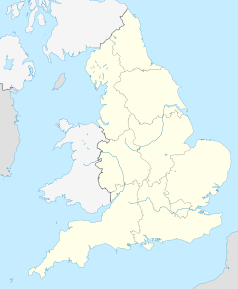Aston Abbotts
| ||
(c) Rob Farrow, CC BY-SA 2.0 | ||
| Państwo | ||
| Kraj | ||
| Hrabstwo | Buckinghamshire | |
| Dystrykt | Aylesbury Vale | |
| Populacja (2001) • liczba ludności | 404[1] | |
| Nr kierunkowy | 01296 | |
| Kod pocztowy | HP22 | |
Położenie na mapie Buckinghamshire Contains Ordnance Survey data © Crown copyright and database right, CC BY-SA 3.0 | ||
Położenie na mapie Wielkiej Brytanii (c) Karte: NordNordWest, Lizenz: Creative Commons by-sa-3.0 de | ||
| Strona internetowa | ||
| Portal | ||
Aston Abbotts – wieś w Anglii, w hrabstwie Buckinghamshire, w dystrykcie Aylesbury Vale. Leży 61 km na północny zachód od centrum Londynu[2]. W 2001 miejscowość liczyła 404 mieszkańców[1].
Przypisy
- ↑ a b Neighbourhood Statisitics 2001 Census. [dostęp 2010-10-05]. [zarchiwizowane z tego adresu (2011-06-12)].
- ↑ Aston Abbotts na mapie. getamap.ordnancesurvey.co.uk. [dostęp 2010-10-01].
Media użyte na tej stronie
(c) Karte: NordNordWest, Lizenz: Creative Commons by-sa-3.0 de
Location map of the United Kingdom
Flag of England. Saint George's cross (a red cross on a white background), used as the Flag of England, the Italian city of Genoa and various other places.
Contains Ordnance Survey data © Crown copyright and database right, CC BY-SA 3.0
Map of Buckinghamshire, UK with the following information shown:
- Administrative borders
- Coastline, lakes and rivers
- Roads and railways
- Urban areas
Equirectangular map projection on WGS 84 datum, with N/S stretched 160%
Geographic limits:
- West: 1.33W
- East: 0.33W
- North: 52.21N
- South: 51.47N
(c) Rob Farrow, CC BY-SA 2.0
Church of England parish church of St. James the Great, Aston Abbotts, Buckinghamshire, seen from the southeast. The tower is late 15th or early 16th century, but the nave and chancel were demolished and replaced in 1865–66.









